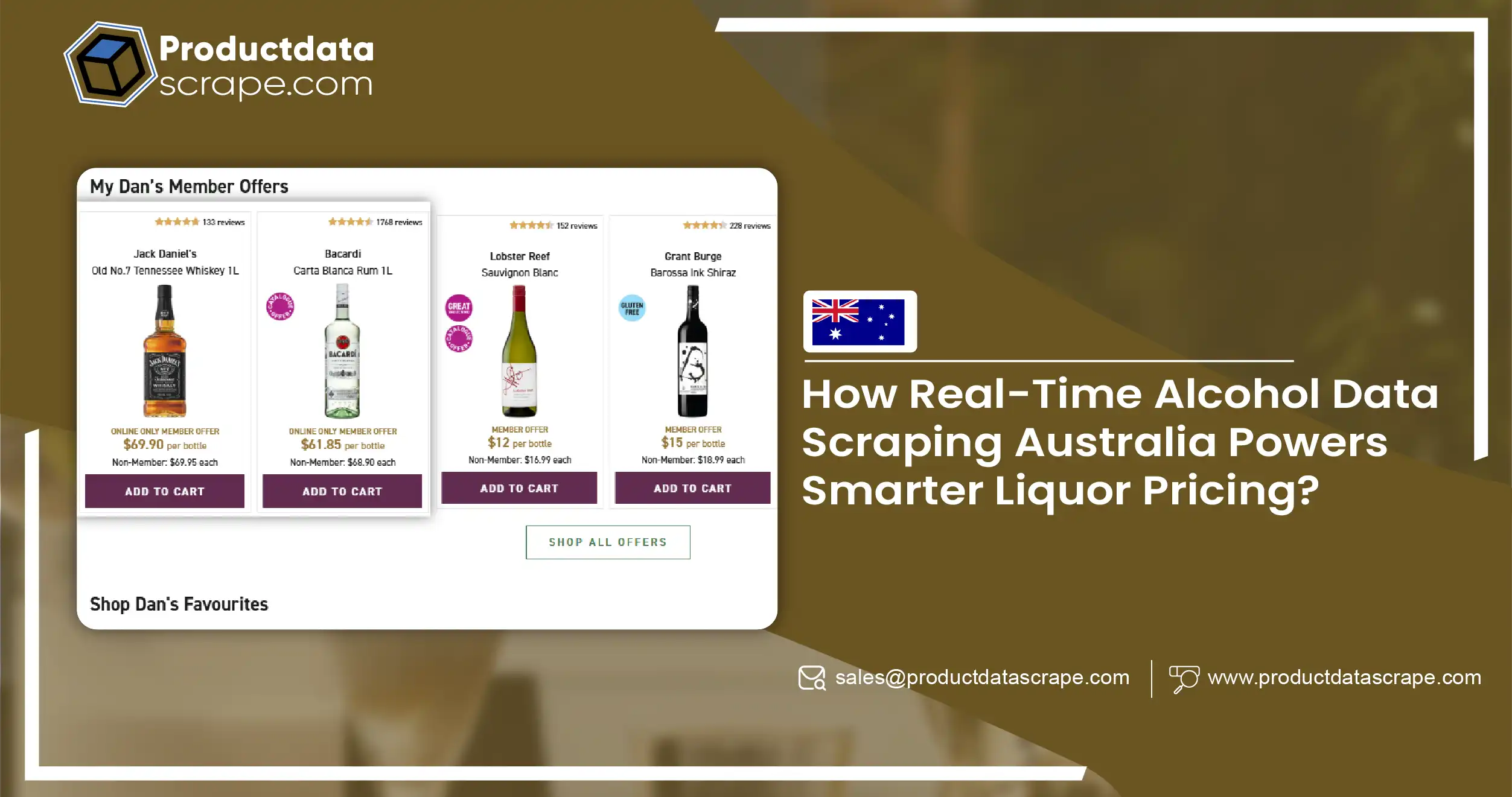
Introduction
Australia’s liquor industry is undergoing a digital transformation, with
dynamic pricing and real-time promotions redefining consumer choices. Whether it’s Dan Murphy’s,
BWS, Liquorland, or niche wine stores, pricing volatility across product categories—beers,
spirits, wines—requires constant monitoring. Businesses can no longer rely on periodic checks;
instead, they need Real-time alcohol data scraping Australia to stay ahead.
Retailers, distributors, and pricing intelligence platforms are now leveraging
data scraping technologies to collect timely updates on alcohol SKUs, discounts, and
availability. From major chains to independent stores, data-driven insights fuel smarter
pricing, replenishment, and promotional decisions. The ability to scrape alcohol product data
from Australian sites in real-time means businesses can track fluctuations across hundreds of
products daily.
This blog explores how Real-time alcohol data scraping Australia enhances
pricing strategy, drives customer loyalty, and ensures brands stay competitive—powered by robust
scraping and automation tools offered by Product Data Scrape.
Tracking Price Fluctuations Across Major Liquor Chains
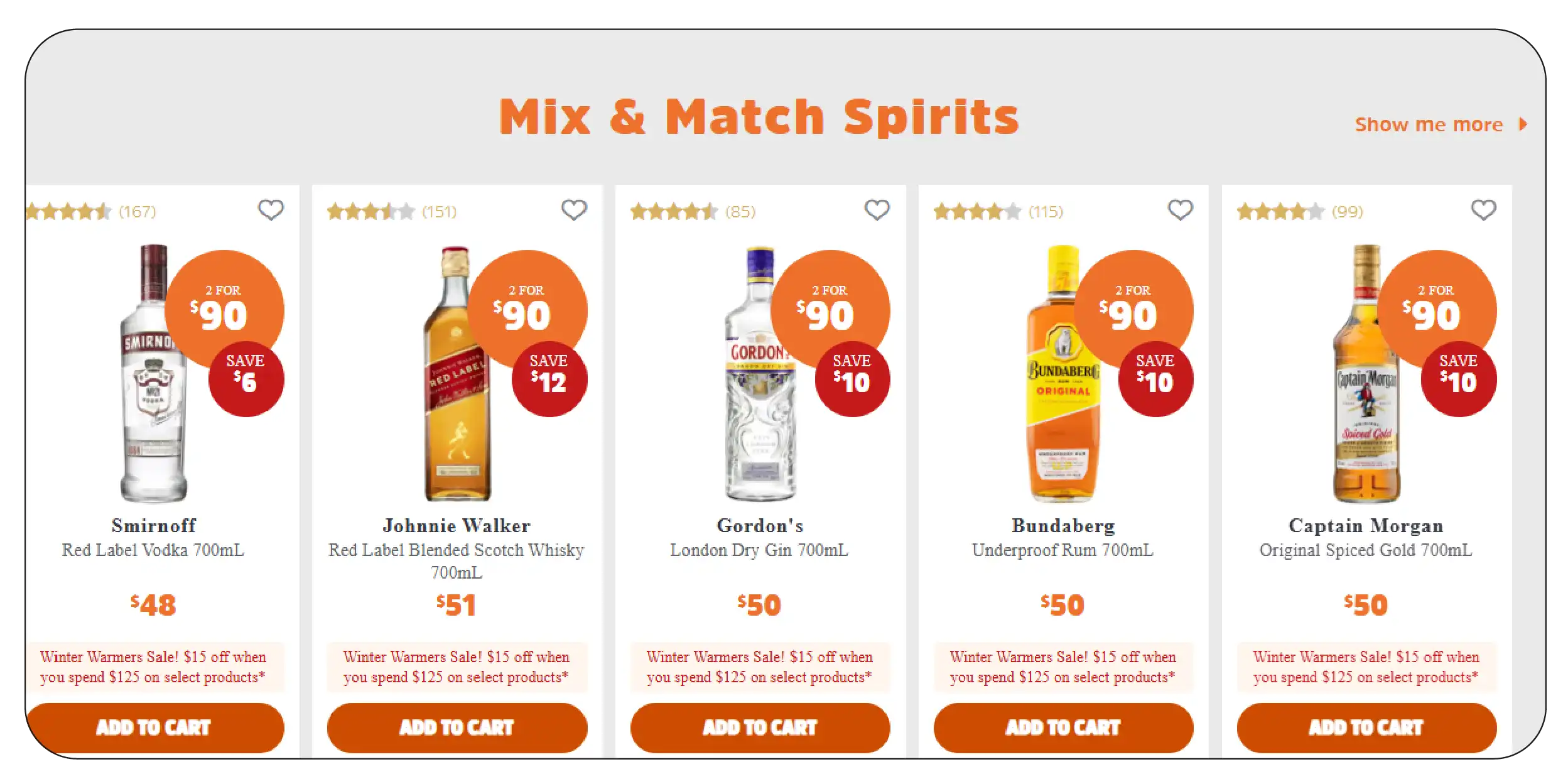
Australia's liquor retail environment is highly competitive, with top players
adjusting prices daily to match or outprice competitors. With increasing online penetration,
brands are moving beyond static pricing models. Implementing Real-time alcohol data scraping
Australia allows stakeholders to monitor pricing at scale, across stores and product categories.
For example, Dan Murphy’s and BWS run multiple weekly price drop campaigns
across their digital
platforms. Without automated tools, tracking the frequency and intensity of these promotions is
inefficient. Through automated scraping, pricing intelligence platforms can monitor changes in
real time, capturing discount trends, campaign durations, and store-specific variations.
Table: Average Monthly Price Changes (2020–2025)
| Year |
Avg. Monthly Price Changes |
Discount Campaigns |
| 2020 |
7.8 |
52 |
| 2021 |
8.5 |
64 |
| 2022 |
9.3 |
71 |
| 2023 |
10.1 |
78 |
| 2024 |
11.2 |
89 |
| 2025 |
12.5 |
96 |
The above data shows a steep rise in price fluctuations. This volatility
reflects competitive pressure and promotional frequency, particularly during public holidays and
peak seasons. With scraping alcohol prices from Australian retail sites, brands can dynamically
adjust their pricing strategies, offering real-time alignment with market conditions and
competitor actions.
This real-time response mechanism allows brands to avoid pricing gaps, retain
customer interest, and reduce cart abandonment. Price comparison platforms also benefit
significantly, as accurate and fresh data boosts engagement and conversions.
Ultimately, Real-time alcohol data scraping Australia is not just a competitive
edge—it's a necessity for modern-day pricing agility.
Monitoring Stock Availability with Inventory-Level Insights
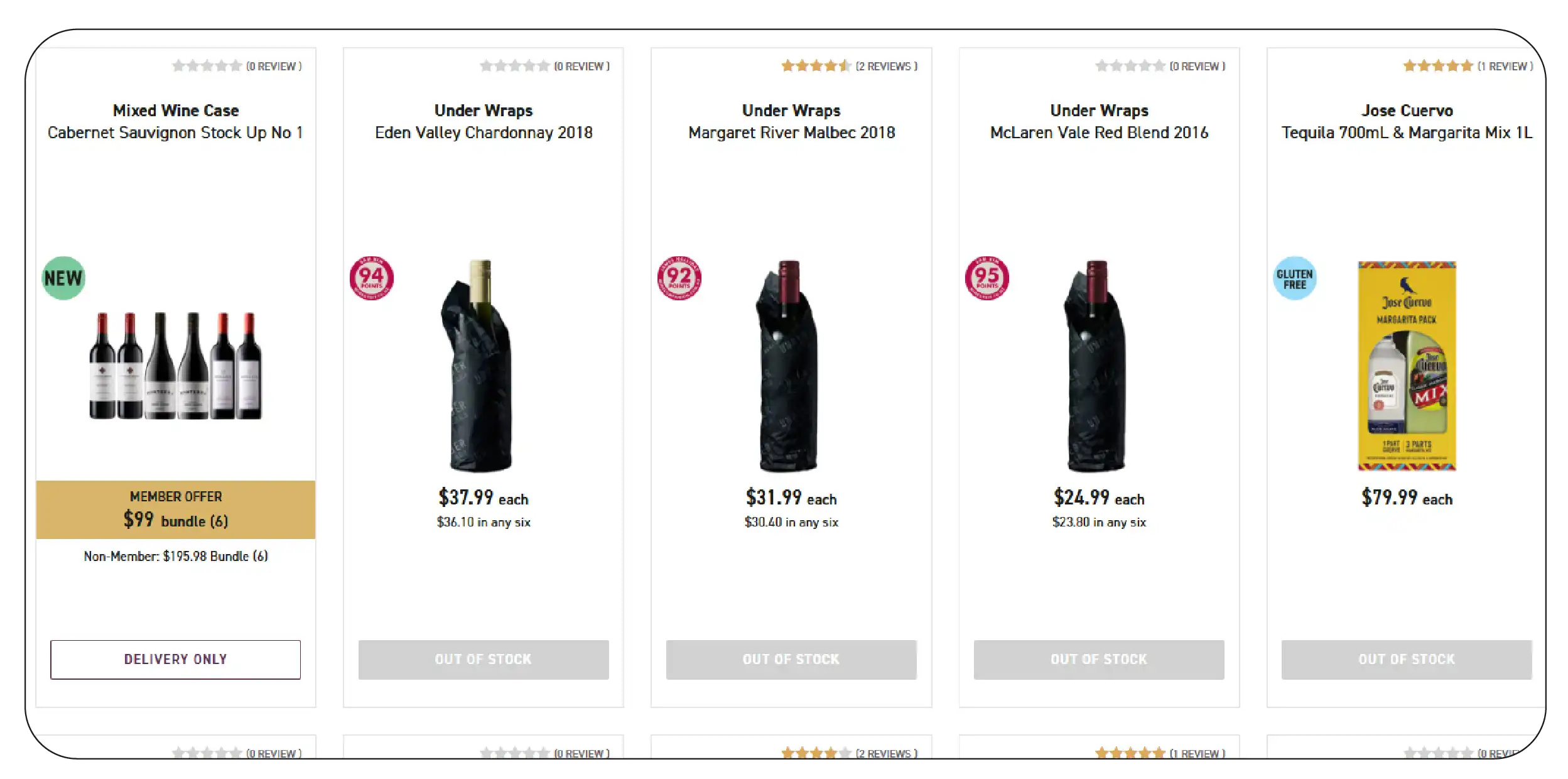
Availability is as important as pricing. Promotions lose their value if products are unavailable
when demand peaks. That’s why extract Australian liquor store inventory data is central to
operations and logistics planning in the alcohol market. Using scraping bots, businesses can
receive near real-time alerts on low-stock items, new arrivals, and replenishment cycles.
Retailers often struggle with stockouts during major events like Christmas, New Year’s Eve, or
national sports finals. A single day of missed sales during these times can lead to thousands in
revenue loss. Through real-time liquor inventory data scraping services , businesses gain early
warning signals, allowing them to restock high-demand items before supply-chain lags set in.
Table: Weekly Out-of-Stock Incidents by Product Type (2020–2025)
| Year |
Wine |
Spirits |
Beer |
| 2020 |
320 |
285 |
260 |
| 2021 |
345 |
301 |
278 |
| 2022 |
368 |
330 |
296 |
| 2023 |
395 |
356 |
319 |
| 2024 |
425 |
382 |
340 |
| 2025 |
451 |
405 |
368 |
Inventory Visibility Through Web Scraping
As shown, stockouts are growing in frequency year-on-year. Factors like global supply
disruptions and unpredictable local demand drive these trends. Web scraping tools provide
visibility into stock-level metadata such as units remaining, last restocked date, and
location-wise availability.
For example, if a product is out of stock in NSW but available in VIC, national retailers can
redirect customer traffic or balance inventory using internal logistics. With web scraping
services for Australian liquor stores, even small brands and regional retailers gain access to
insights previously reserved for enterprise-level players.
Scraping inventory data also supports smarter procurement. Brands avoid overstocking slow-moving
products, reduce wastage, and align inventory turnover with demand trends. Moreover, this helps
streamline customer experience by ensuring accurate product listings across marketplaces,
reducing negative reviews tied to availability errors.
Overall, inventory scraping bridges the gap between demand and supply, making operations more
agile and customer-focused.
Stay ahead of stockouts—leverage real-time inventory
scraping to monitor availability, optimize restocking, and meet peak
demand seamlessly.
Contact Us Today!
Uncovering Regional Discount Patterns Using Liquor Price Maps
Discounts in Australia’s liquor market vary not only by brand but also by region. A bottle of
Shiraz might sell for AUD 14.99 in Adelaide but for AUD 11.50 in Melbourne during a weekend
promo. Identifying these patterns manually is nearly impossible. That’s where web scraping
alcohol & liquor data becomes crucial—helping brands visualize and act upon regional pricing
trends with speed and accuracy.
Using geolocation-based scraping, pricing intelligence tools can map discounts by zip code,
city, or even store location. This enables marketers to develop region-specific campaigns and
helps consumers discover better deals. Through Real-time alcohol data scraping Australia, brands
can compile city-wise discount timelines and flag sudden markdowns or pricing anomalies that may
indicate inventory clearance or overstocking.
Table: Regional Alcohol Discount Trends (2020–2025)
These numbers reveal a steady increase in city-level price differences, driven
by targeted promotional strategies and varying regional demand. By leveraging Real-time alcohol
data scraping Australia, businesses can create dashboards for decision-makers, showing where to
increase ad spend or offer exclusive in-store deals.
This methodology benefits not just sellers, but price comparison engines and
delivery aggregators that seek hyperlocal pricing intelligence. With this visibility, platforms
can automatically recommend stores based on the customer’s location, preferred brand, and
budget.
Furthermore, liquor brands entering new markets can use regional scraping
intelligence to benchmark against local competitors. Real-time tracking allows new entrants to
identify underserved areas, optimal launch pricing, and even gaps in product
listings—opportunities that static audits often miss.
Hence, web scraping alcohol & liquor data serves as a geo-competitive advantage
in shaping market share and campaign performance. Data-driven discount maps are reshaping how
liquor products are priced, sold, and promoted across Australia.
Building Dynamic Product Catalogs with Rich Metadata
The modern alcohol e-commerce experience depends on how detailed, accurate, and timely a product
listing is. Whether it’s the alcohol percentage, brand description, bottle size, or taste
profile—consumers want clarity. Scrapers today don’t just collect prices; they extract metadata
fields like food pairings, expert reviews, and promotional tags to build dynamic product
catalogs. This is where Alcohol product data extraction service Australia becomes invaluable.
An intelligent scraper can gather over 15 key metadata points for each SKU from multiple retail
sites like Dan Murphy’s, Liquorland, or First Choice. These include discount flags, top-rated
badges, limited editions, and even suggested glassware. All of this helps build a more engaging
and SEO-rich product page.
Table: Metadata Fields Extracted per Product (2020–2025)
| Year |
Avg. Metadata Points |
Sites Scraped |
| 2020 |
6.5 |
15 |
| 2021 |
8.2 |
22 |
| 2022 |
9.7 |
31 |
| 2023 |
11.3 |
39 |
| 2024 |
13.1 |
46 |
| 2025 |
14.9 |
53 |
With richer metadata, product catalogs become more search-optimized, increasing
organic traffic and conversions. Customers are also more likely to make informed purchases,
reducing return rates and enhancing satisfaction.
Retailers benefit from automated updating systems. For example, when a product
goes on clearance or wins an award, the scraper updates the listing overnight. With Real-time
alcohol data scraping Australia, brands don’t have to wait for internal teams to catch
up—information flows instantly.
This automation also helps marketing teams customize promotions. A red wine
with a 4.7 rating and 20% off can be prioritized in banners or pushed to email subscribers.
Incorporating such granularity is especially useful for alcohol subscription
boxes and curated selections, where the uniqueness of offerings drives value. Businesses using
Alcohol product data extraction service Australia can innovate faster, enrich customer journeys,
and improve ROI on paid ads.
By embedding structured metadata scraping into operations, sellers turn static
product pages into dynamic retail engines—always fresh, always relevant.
Competitive Price Benchmarking Using Real-Time Liquor Data
In a highly competitive marketplace, being a few cents cheaper—or more expensive—can
dramatically shift customer choices. To remain competitive, liquor brands and retailers must
know how their prices stack up against others across categories and regions. This is where
competitive pricing analysis for alcohol products using scraping data plays a crucial role.
Real-time alcohol data scraping Australia allows businesses to track how frequently competitors
update prices, which SKUs receive the most discounts, and how long price drops stay active.
These insights enable smart pricing decisions that go beyond guesswork. For instance, a retailer
might discover that Jameson Whiskey sees a 15% discount on average every third Friday of the
month across two major competitors. With this intelligence, the retailer can proactively prepare
competitive campaigns in sync.
Table: Price Benchmarking Frequency (2020–2025)
| Year |
Avg. Competitor Checks per Week |
Price Match Adjustments |
| 2020 |
12 |
420 |
| 2021 |
15 |
590 |
| 2022 |
18 |
660 |
| 2023 |
22 |
745 |
| 2024 |
27 |
830 |
| 2025 |
31 |
910 |
With this level of granularity, businesses don’t just react—they lead with
data-driven precision. Many liquor brands use scraping Flipkart E-Commerce Product Data style
frameworks adapted for local Australian marketplaces to compare not just prices, but promotional
taglines, ad creatives, and even featured reviews.
Dynamic pricing systems can be integrated with these scraped datasets, enabling
auto-adjustments based on competitor behavior. This ensures brands are always within the
customer’s preferred price range without compromising profit margins.
Additionally, by identifying patterns in competitor pricing, businesses can
spot underpriced or overpriced products in their own catalog. This not only protects against
margin erosion but also uncovers upselling opportunities. For example, if a boutique gin brand
notices it’s priced too low compared to competitors with similar ratings and volumes, it can
reposition itself with a premium label and higher margin.
The role of competitive pricing analysis using scraping data is vital—it
empowers Australian liquor players with instant feedback loops, high-accuracy pricing decisions,
and long-term strategic positioning.
Gain pricing precision—use real-time liquor data
scraping to benchmark competitor rates and sharpen your promotional
strategy effortlessly.
Contact Us Today!
Enhancing Consumer Experience with Ratings, Reviews & Deals Tracking
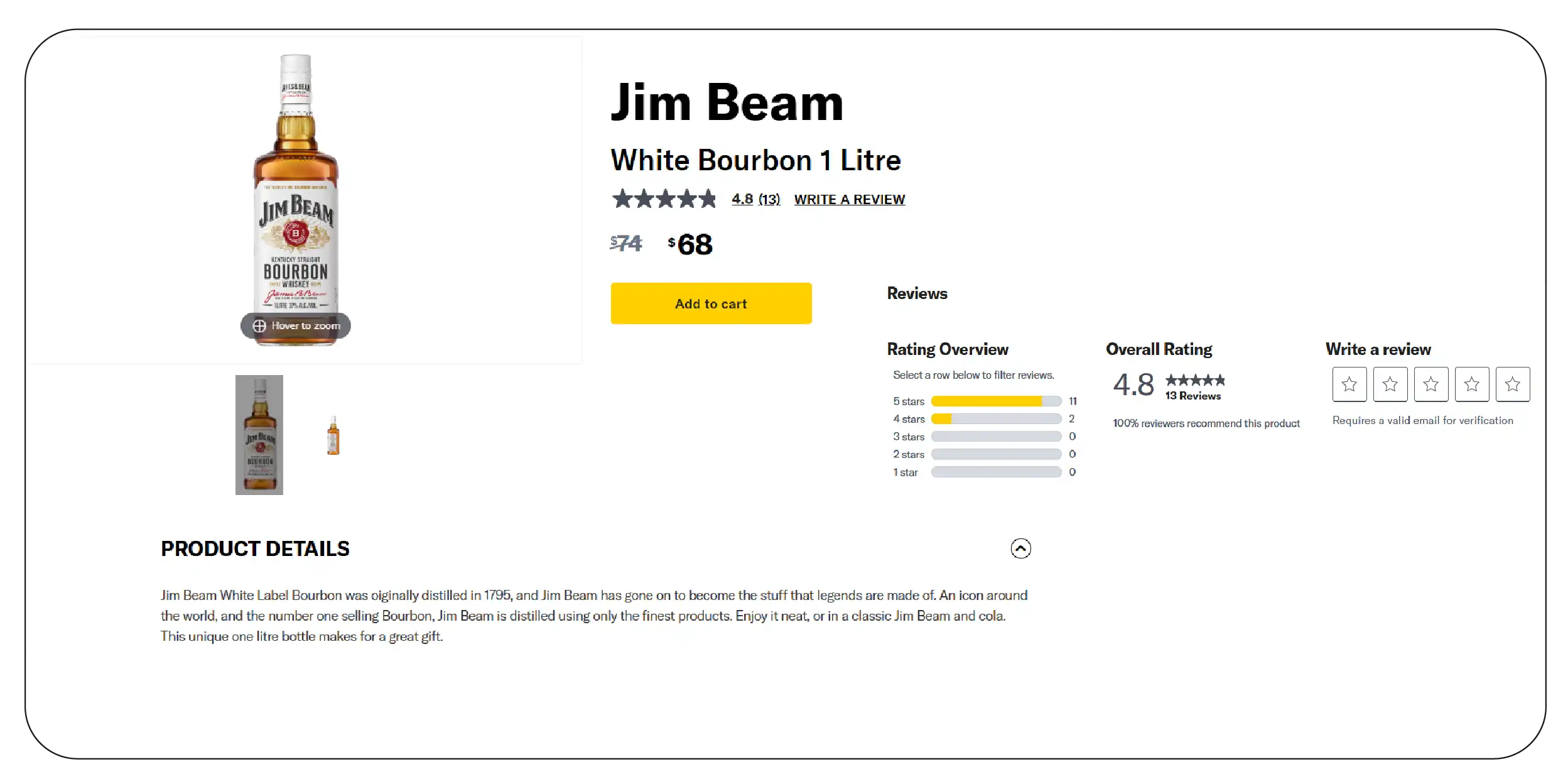
Consumer trust in alcohol purchases is heavily driven by social proof—ratings, reviews, and deal
alerts. With the growth of online liquor shopping, platforms now compete not only on price and
availability but also on how well they present trusted user-generated content. That’s why
customer reviews and ratings scraping for diapers JioMart style strategies are being adapted for
the liquor segment in Australia.
With Real-time alcohol data scraping Australia, platforms can continuously extract updated
review scores, keyword-tagged sentiment summaries, and trending flavor descriptors from online
listings. Whether it’s a 4.6-star wine from South Australia or a trending IPA beer with 2,000
reviews, showcasing this data improves customer trust and drives conversions.
Table: Review-Driven Conversions Growth (2020–2025)
| Year |
Avg. Conversion Boost (With Reviews) |
Products Monitored |
| 2020 |
9.4% |
8,500 |
| 2021 |
11.2% |
11,300 |
| 2022 |
13.7% |
14,100 |
| 2023 |
15.6% |
18,700 |
| 2024 |
17.8% |
21,400 |
| 2025 |
19.3% |
25,000 |
This data proves that real-time review monitoring directly impacts sales.
Using JioMart Quick Commerce Data Scraping API methodologies, Australian liquor retailers can
parse keywords such as “smooth finish,” “value for money,” or “fruity aftertaste” and use them
as filters or badges on product pages.
Moreover, scraping real-time deals from multiple platforms helps e-commerce
aggregators notify users instantly via mobile apps or email alerts. This feature is especially
effective for high-volume sales events like EOFY (End of Financial Year) sales or weekend flash
deals.
Another major advantage is fraud detection. Scraping tools can flag suspicious
review spikes or bot-generated content that might harm brand credibility. With automated
moderation systems fed by scraped review data, brands can safeguard their reputations
proactively.
Integrating all this into user experience makes navigation and decision-making
effortless. Whether it's filtering by most-reviewed, highest-rated, or best-discounted, web
scraping alcohol & liquor data allows online liquor platforms to mimic the feel of in-store
guidance—digitally and intelligently.
Why Choose Product Data Scrape?
Product Data Scrape specializes in real-time e-commerce data scraping, offering powerful tools
for monitoring inventory, promotions, and pricing across Australian alcohol retailers. Our
clients range from liquor aggregators to inventory tech firms. We offer:
- End-to-end pipelines to scrape alcohol product data from Australian sites
- Dashboards and alerts for price drops, stock-outs, and promotions
- Custom APIs for JioMart Quick Commerce Data Scraping API-style integrations
- Region-specific modules to monitor scraping Meesho E-Commerce Product Data equivalents in
the alcohol domain
With a proven track record, we deliver structured, high-quality data ready to fuel your
analytics, marketing, and retail operations.
Conclusion
Real-time visibility is not just a luxury—it’s a necessity. With Real-time
alcohol data scraping Australia, businesses gain a significant edge by reacting to market
changes instantly, improving margins, and delivering superior customer value. Whether you're a
retailer, distributor, or price comparison platform, Product Data Scrape is your trusted partner
in unlocking the full potential of alcohol market analytics in Australia. Ready to start
scraping smarter? Contact Product Data Scrape for custom alcohol data solutions today!



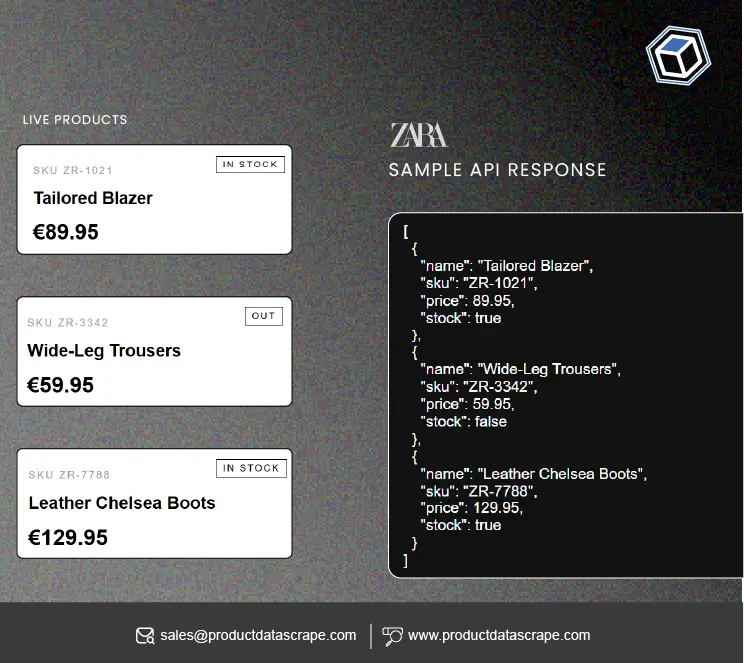


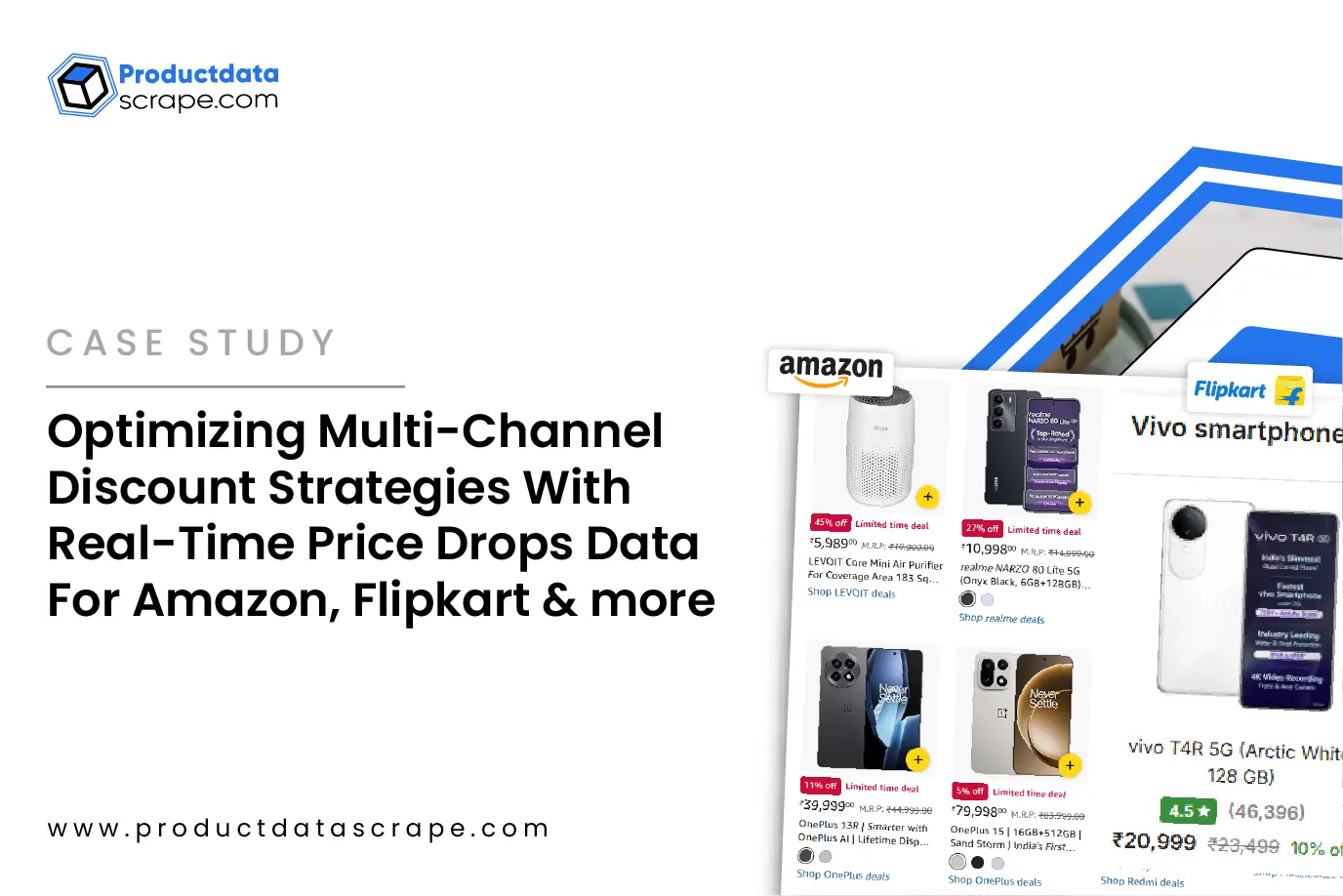










.webp)
-01.webp)
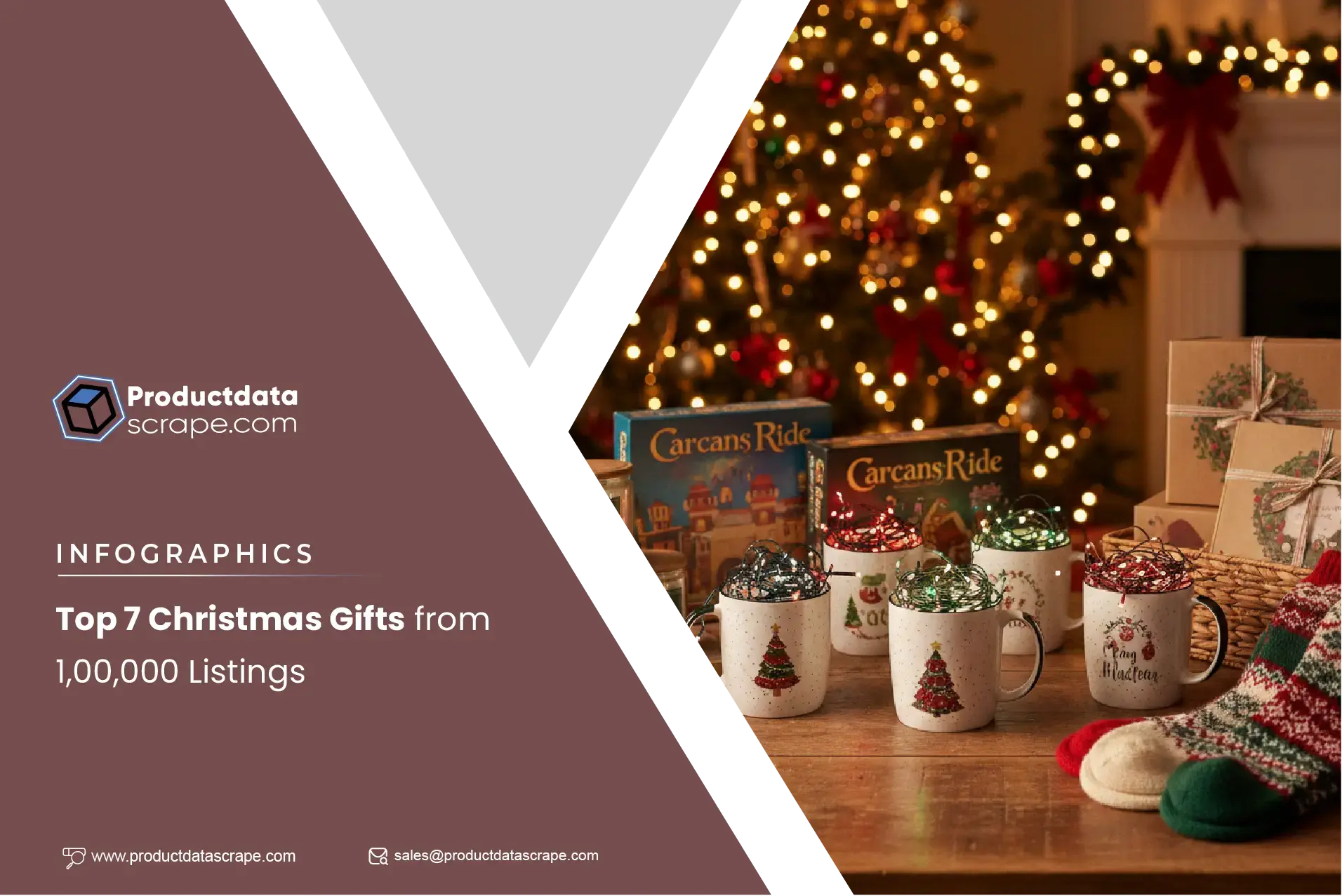
.webp)
